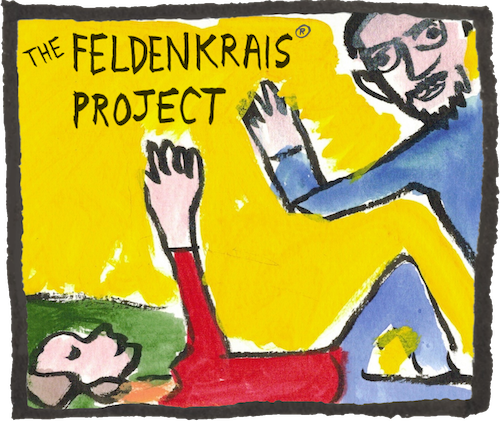Disclaimer: The Feldenkrais Method of somatic education is presented on this website for educational purposes and self-guided study only. The Method and all recordings, live online classes, pages, blog posts, and documents of any kind available from this website are not intended to be a substitute for professional help or medical treatment. Nothing on this website is intended to diagnose or treat any pathology, disease or injury of any kind. This website, all media files found on it, all live classes available through it, The Feldenkrais Project, Twin Cities Feldenkrais, LLC, and the creator of any and all of these files, and anyone featured on these files, cannot be held responsible for any injuries or discomfort that might arise while doing these lessons. If you have any doubts about whether doing Feldenkrais lessons is appropriate for you, be sure to consult your medical practitioner.
The following are service marks or certification marks of the Feldenkrais Guild of North America: Feldenkrais®, Feldenkrais Method®, Functional Integration®, Awareness Through Movement®, ATM®, FI®, Guild Certified Feldenkrais Teacher®, and Guild Certified Feldenkrais PractitionerCM.





Another great lesson! Thanks, Nick.
Fantastic lesson.
I was amazed by how effortless it felt to shift my weight to stand on one leg afterwards as compared to before. Old patterns that I had developed when I had my leg in a hip to toe cast for several months as a teen, surfaced into memory, and seemed to dissolve and reorganize even as I became aware of them.
This is my second time through this series and I am hearing each lesson as if for the first time. New insights available moment to moment. Thankyou!
What joy to watch the pandas playing in the recent snowfall at the National Zoo this week! The panda cam, positioned above them, gave me a clear view of one panda walking back up to the top of the hill to slide back down. I was struck by the opposing yet gracefully swinging movements of her head, shoulders, spine, hips and legs as she climbed. Although I’m just a pathetic two-legged creature, this lesson leaves me feeling as loose jointed, steady and strong as that panda — and just as playful. Thank you, Nick!
I really enjoyed this lesson! I was debating doing a yoga practice but felt very stiff around neck and shoulders. So I picked the side bending lesson and as soon as I started, i could feel signs of changes and release. With just the very beginning movements of lengthening one arm on the floor i was yawning every 10 seconds and feeling a lot of letting go. The most important for me was your instruction of easing up and letting go of tension while doing the movement. I could feel myself tensing and lifting the head or shoulders unessecerely. Doing the movements with less range and less effort became easier and very pleasant. At the end, standing up doing the reference movement I felt so much softer in ribs, neck and shoulders. Much softer than I would have expected! Thank you so much!
Just adding a suggestion to keep movement very light and pause often as these side bending muscles ( QL, obliques etc,) can get tight the next day.
Amazing! My side bending improved during this lesson, but so did my ability to tilt over the standing leg.
Since I last did this lesson I have had a fall and a back injury. There is a part of my spine which seems to not join in with the rest and blocks communication. This lesson did much to improve harmonious action. Thankyou very much for this lesson.
ich war neugierig als ich wieder auf 2 Beinen stand–jede Bewegung besteht aus so vielen Facetten. Ist das spannend 🙂 und es macht Freude. Danke für diese Lektion.
Thanks for your comment Freini! I also wanted to share with everyone the quite lovely Google translation from German that I just enjoyed:
“I was curious when I stood on 2 legs again – every movement consists of so many facets. It’s exciting 🙂 and it’s fun. Thanks for this lesson.”
A mentor of mine used to love teaching about how we parse ATM sensations like we’re looking at the facets of a fine jewel.
WOW! This is an amazing lesson. I feel that I wrung myself out, in the best sense of that. And I found a flexibility and ease in my spine that made me feel like I found a whole new dimension to move in! And more – I did experience the shift that you described from the beginning.l of the lesson until the end. I went from moving in seeming two-dimensional straight lines to moving in three-dimensional curves. I absolutely plan to practice this lesson again when I feel stuckness. Thank you.